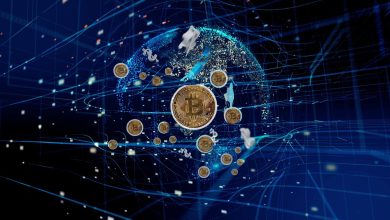Recent Developments in Reputation Management

The necessity and challenges of building a reputation in the traditional business world have been known for centuries. However, today most companies are conscious of how to build a good reputation. They are aware that being the target of various slander and defamation will lose their durability over time. However, written text is different from spoken words; life is much longer over time. This article provides an overview of what happens if we need to face the problem of building and maintaining a good reputation in the virtual world of the internet. Therefore, the purpose of this section is to summarize and present the latest developments in the reputation field.
The problem of building and then maintaining a good reputation has been centuries old. In the eighteenth century, Benjamin Franklin, a wise man and now often known as the face of the hundred dollar bill, or the inventor of the lightning rod, described the process of building reputation as an extremely fragile system. He said that it takes a lot of good to build a good reputation, but only one evil and good reputation disappears immediately. Today, his words are more current than ever before. The rapid onset of mass media in the second half of the twentieth century fundamentally changed the established principles of institutional practice in many areas. Before the advent of the media age, building the reputation of business organizations and even individuals was not only difficult but well protected.
The procedures for how to build a good reputation have been sharpened for hundreds of years. Years of proven and effective reputation building tools have managed to provide solutions in difficult situations almost seamlessly. But times have changed and the flow of information has accelerated. The nature of the knowledge has been adapted to fit the times. What was once special is now open to the public. The availability of information together with the interaction of the environment offers numerous possibilities to influence reputation; Of course, it’s not just about positively impacting her. The way to a positive outcome may seem like an effort to maximize transparency, maximum fidelity, and a positive approach to entrepreneurship. If we lived in an ideal and rational world, he would definitely take firm steps towards the desired goal.
Businesses as well as individuals will be able to plan a series of steps to create the imagined goal. However, we live in a real world full of real people. Warren Buffett could definitely talk about that. Mr. Buffett came face to face with the limits of the real world in 1987, when he made the largest acquisition of the Berkshire Hathaway company to date, buying Solomon Inc. for $ 9 billion. Despite the excellent reputation of the famous Omaha Oracle for decades, it was soon necessary to deal with an existential threat in the form of negative publicity associated with Solomon’s activities. Mr. Buffett made it easy in the period before the Internet’s inception. In the process of restoring their reputations, the audiences that he and his team had to lead were largely clearly defined.
With the advent of the Internet, the flow of information has accelerated tremendously, it can be said that a few mouse clicks are enough to destroy a good reputation today. There are many organizations that are deliberately trying to destroy their corporate reputation, be it fierce competitors, dissatisfied employees or customers. It is sufficient to mention Jeff Jarvis’ name and his blog, Dell Hell, which he wrote since 2005. The Internet provides users with the ability to permanently interfere with a business’s online reputation in real time. Google has become an ideal tool for building or destroying reputation. The disorganized nature of the site provided a platform for the disorganized spread of information. The positive side, of course, is access to up-to-date and uncensored information. The downside is a serious lack of authenticity and incorrect or altered information. In our department, we provide an overview of what happens if we suddenly need to face the problem of building and maintaining a good reputation in both the traditional and virtual world. Sustainable development of corporate reputation has never been more complex.
Traditional Reputation
The importance of corporate reputation is steadily increasing, especially in light of the current competitive business environment. A well-defined reputation strategy can contribute to the overall well-being of the business and affect its market value. There are many strategies for how to build and coordinate reputation; However, it is important to understand that success requires more than just a good technology or quality product and service portfolio.
The fact that corporate reputation studies take place in more than one discipline has caused it to have many definitions. Fombrun and Van Riel define its business reputation as a value that sets the company apart, linked to strategic measures and activities, and difficult to imitate. When describing business reputation, authors often refer to common denominators such as trust and collaboration. The Van Riel representative of the Reputation Institute defines business reputation as a set of perceptions of consumers regarding the company’s past actions, results, expectations and expectations of other actions. According to the American Heritage Dictionary, reputation is the opinions of interested parties about the company.
In addition, reputation refers to credibility with consumers and the overall increase in market value, as it affects the market position of the company by focusing on the decision-making process. The basis for building reputation is the perception of external observers, namely consumers. In addition, Fombrun and Van Riel argue that in the eyes of consumers, being reliable and reliable is crucial to building reputation. Regarding consumer perceptions, Budd states that although it is malleable, it is very difficult to change the perception of a brand. The fact that businesses are literally fighting for their reputation as their influence can change consumers’ attitudes has been studied by numerous authors. Good reputation can increase customers’ confidence in their purchasing decision and reduce shopping mismatch, thus leading to increased satisfaction and customer loyalty.
The Reputation Institute has identified seven main factors that affect business reputation: Products, Innovation, Workplace, Governance, Citizenship, Leadership and Performance. These factors are handled as follows;
• Leadership means how the company leads.
• Performance and profitability are the main indicators of reputation success.
• Consistent delivery of quality products and services determines the value of a company.
• Innovative companies that creatively push the status quo are more respected.
• The workplace directly affects the quality, skills and willingness of the corporate, culture, recruitment, retention and human resources, which are its greatest assets.
• Management will only benefit from stakeholder support of those who provide business licenses to the company, and in case of doubt, will result in continued growth.
• Citizenship, on the other hand, corporate social responsibility, charity, volunteer efforts and philanthropic campaigns help make the world a little better.
Based on a series of studies on reputation, the Reputation Institute states that the seven factors mentioned above have different weights or pyramid-like factors of importance, based on the quality of goods or services and related customer service, and that integrity is closely monitored. It is the company’s (fulfillment of declared promises and ethical behavior) and then all other qualities. In other words, the most important thing is a portfolio of products and services; however, business variables are not sufficient to achieve a good business reputation. Research like this creates a knowledge base for more in-depth investigation of problems in different settings.
Sustainable Development of Reputation Management
Managing reputation, especially online reputation, as a new phenomenon in the form of fragile intangible assets is gaining in importance and is becoming one of the basic prerequisites for responsible and sustainable reputation management. Selected quantification methods were used to present the problem followed by reputation measurement. Based on our extensive research on reputation over many years, one can conclude that the sustainable improvement of reputation management combines offline and online techniques, as both worlds are interconnected.
In terms of sustainable reputation management, topics that rank at the top of search engine results undoubtedly have a significant advantage in terms of online reputation for the public. If a user is looking for relevant information and at the same time does not have his or her own experience on a particular topic, in the absence of a strong and positive presence, their perception of the particular subject can be significantly distorted despite enormous dimensions. It is the effort and physical representation of the excellence of the subject in the traditional world.
Maximizing positive media outputs in mind-blowing Internet media while eliminating negative publicity and shifting neutral or negative search results to irrelevant positions presented on the second and n-th side of Google search results. It is a multi-platform approach to responsible and sustainable online reputation management. Strategic alliances of major players will help more effective optimization of search engines and increase the usability of preferred results in relevant positions in search. However, Google isn’t the only platform to consider. Integration of main platforms offered by virtual social networks and media will provide active feedback and active content control.
This largely eliminates the possibility of spreading half-truths and incomplete or untrue information. The inclusion of virtual social networks in the communication portfolio of companies can significantly contribute to the increase in interaction and originality within the communication provider-consumer. Not to mention invaluable sources of relevant data in the form of real-time feedback. Especially in crisis marketing communication, the integration of modern communication channels is seen as the key to overcoming the so-called first wave. Finally, it is important to pay attention to the building of consumer tribes; Without any developed and motivated user base, it is not possible to predict significant results for any of the described activities.
Although different environments require specific approaches, record different dynamics, and require special tools, the network between them is very strong. It’s almost impossible to be a star in just one world. However, due to its nature, online reputation is more fragile.




